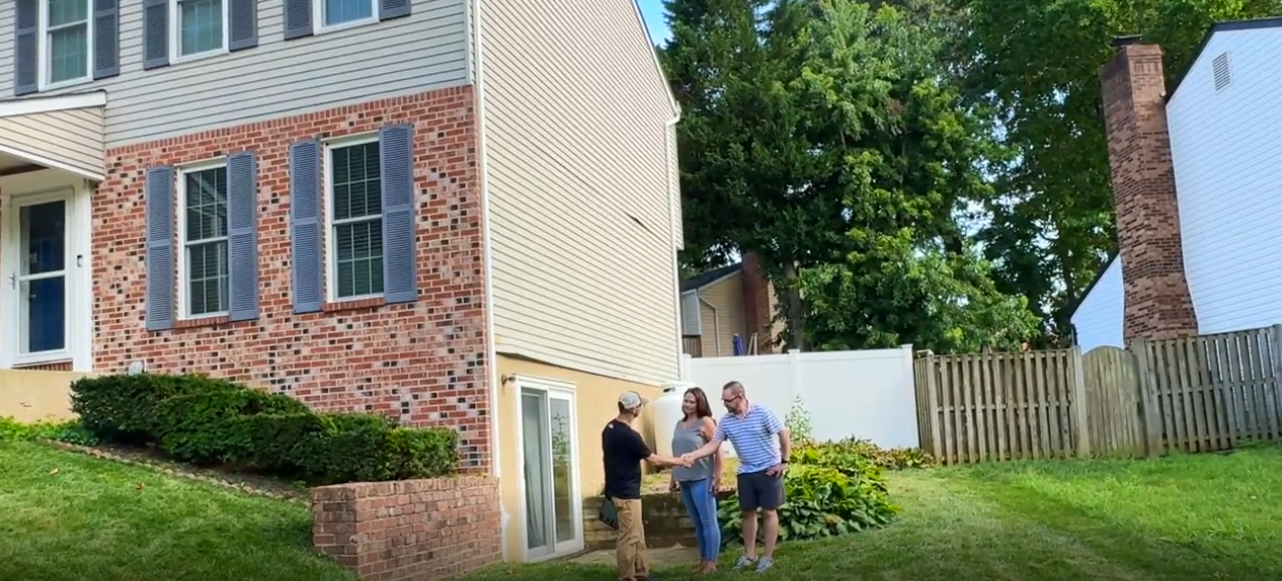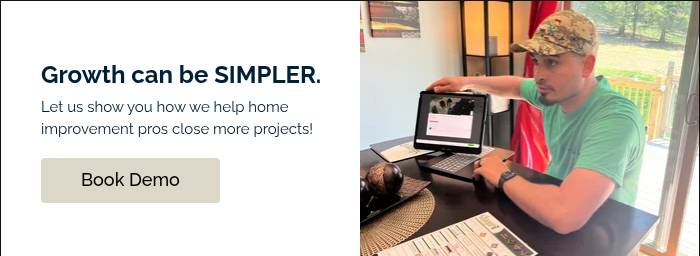For many homeowners, the hardest part of a remodeling or exterior home improvement project isn’t picking the right product—it’s deciding which contractor to trust. Every contractor can show glossy brochures, polished websites, or promise that they’re “the best in town.” But at the kitchen table, when a homeowner is weighing a big investment, what really matters is proof.
That’s where Project Map It (PMI) becomes your unfair advantage. PMI allows you to bring real projects, real reviews, and real local credibility into every sales pitch. Instead of just telling homeowners what you can do, you get to show them—with maps, portfolios, and photos of projects you’ve actually completed in their neighborhood.
In this post, we’ll walk through how to leverage your PMI map and portfolio to make your sales presentations more compelling, build trust with homeowners, and close more deals.
Why Visual Proof Matters in Sales
Think about how you buy. Would you hire a landscaper who just tells you they do great work, or would you rather see before-and-after photos of lawns in your area? For homeowners making a significant investment in roofing, siding, windows, or remodeling, the stakes are even higher.
Visual proof matters because:
- It builds instant credibility. Homeowners don’t have to take your word for it—they can see your past work.
- It’s social proof in action. When a prospect sees that neighbors down the street trusted you, it validates their decision.
- It lowers perceived risk. People want reassurance that their project will turn out as promised. PMI portfolios help them imagine their own home’s transformation.
In short: showing is better than telling. PMI turns your past projects into powerful, trust-building visuals that make your sales pitch stand out.
Showcasing Your PMI Map in a Sales Pitch
Your PMI map is one of the most powerful tools you can bring to a homeowner’s table (or to a virtual consultation). Here’s how to use it effectively:
- Start with Location. Pull up your live map and zoom in on the prospect’s neighborhood. Imagine being able to say, “We’ve completed 12 roofing projects within a mile of your home.” That immediately shifts the conversation from generic to local and relatable.
- Filter for Relevance. Use PMI’s filters to highlight projects similar to the homeowner’s needs—same roof type, siding color, or product line. This helps them visualize what their home could look like.
- Leverage Proximity. Homeowners take comfort in knowing you’re trusted nearby. Showing them you’ve worked with their neighbors makes you feel like a known, proven option instead of a gamble.
- Build Interaction. Don’t just show the map—invite them to interact. Let them click on pins, open project photos, and read reviews. This creates a sense of transparency and engagement.
By bringing the PMI map into your sales pitch, you’re not only showing that you’ve done quality work—you’re proving that you’re already the go-to contractor in their community.
Bringing Your PMI Portfolio to Life
The portfolio side of PMI goes deeper than just “dots on a map.” It gives you the ability to highlight specific projects, showcase transformations, and build confidence through customer stories.
Here’s how to use it strategically:
- Match Home Styles. If the homeowner has a colonial-style house with beige siding, show them similar projects from your portfolio. This creates instant relatability.
- Highlight Before-and-After Photos. Nothing is more powerful than seeing a tired old roof or siding system transformed into a beautiful, finished product. Let the photos do the heavy lifting in your pitch.
- Use Reviews as Reinforcement. Many PMI portfolios feature customer testimonials. Quoting a satisfied client, especially one nearby, adds another layer of credibility.
Instead of saying, “We can handle projects like yours,” you’re proving it by showing examples that match the homeowner’s situation almost exactly.
Integrating PMI Into the Sales Conversation
The real magic comes from weaving your PMI tools naturally into the flow of your pitch. You don’t want to treat them as a separate, tacked-on element—you want them to reinforce your story throughout the conversation.
Here’s an example of how you might integrate PMI:
- Without PMI: “We’ve done lots of roofing projects in this area. We’re experienced and do great work.”
- With PMI: “Instead of just telling you about our experience, let me show you. Here’s our live project map—you can see we’ve completed 12 roofs in your neighborhood in the past two years. Here’s one three doors down with the exact shingles you’re considering.”
The difference is night and day. Homeowners don’t have to wonder if your claims are true. They can see the evidence themselves.
Bonus tip: If you’re presenting on a laptop or tablet, hand the device to the homeowner and let them explore. That sense of transparency builds incredible trust.
The Competitive Advantage of Using PMI
Contractors who integrate PMI into their sales pitches immediately separate themselves from the competition. Think about it: if a competitor walks in with a paper brochure and a few stock photos, while you bring up a live, interactive map with real projects and reviews, who do you think homeowners are more likely to trust?
PMI also helps you:
- Justify premium pricing. When you can show your proven track record, you’re not competing as much on price—you’re competing on credibility and quality.
- Demonstrate transparency. Homeowners are wary of hidden risks. Showing them your actual project history removes doubt.
- Differentiate your brand. Few contractors are using this kind of tool, which makes you stand out in a crowded market.
In a business where trust equals contracts, PMI gives you an edge.
Tips for Getting the Most Out of PMI in Sales
To maximize the impact of PMI, consistency is key. Here are some practical tips:
- Keep Your Map Updated. Every new project should be added quickly. A stale map undermines credibility.
- Tag Projects Effectively. Include product types, colors, neighborhoods, and any details that will make filtering easier during a pitch.
- Train Your Sales Team. Make sure every salesperson knows how to use PMI fluidly. Practice weaving it into pitches so it feels natural.
- Leverage PMI Beyond the Kitchen Table. Add your map and portfolio to your website and link it in follow-up emails. This lets prospects continue exploring after your meeting.
The more you integrate PMI into your sales process, the more powerful it becomes.
The Final Word
At the end of the day, sales pitches are about one thing: trust. Homeowners want to feel confident that you’ll deliver what you promise. Project Map It gives you the tools to prove your credibility in a way that no brochure or generic sales script can.
By showcasing your PMI map and portfolio, you’re not just telling homeowners you can do the job—you’re showing them you already have, dozens (or hundreds) of times, right in their own community.
If you’re already a PMI user, make it a priority to integrate your map and portfolio into every pitch. If you’re not yet on board, it’s time to consider how Project Map It can help you close more deals and build lasting trust with your customers.
Ready to win more sales with PMI? Reach out today to learn how Project Map It can give you the competitive edge.





